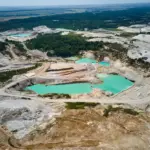Carbon footprint: what it is, how to measure it and business benefits

Did you know that measuring your carbon footprint can reduce costs, improve your reputation and open up new opportunities for your company?
In this article we explain what it is, how to measure it according to ISO 14064 and GHG Protocol, and why more and more Peruvian companies are taking action.
What is the carbon footprint?
The carbon footprint is an environmental indicator that measures the total amount of greenhouse gases (GHG) emitted by an organization, expressed in tons of CO₂ equivalent.
It allows visualizing the environmental impact of a company's operations, from energy use to transportation and the supply chain.
Standards and methodologies to measure it
The main recognized standards for the calculation are:
- ISO 14064-1GHG emissions: international standard that defines how to quantify and report GHG emissions at the organizational level.
- GHG Protocolemissions: globally adopted guide for the calculation of direct and indirect emissions.
- ISO 14067Carbon footprint measurement: specific for product carbon footprint measurement.
In Peru, the tool in Carbon footprint Peru The MINAM combines these standards and awards official recognition for managing your footprint.
What gases are considered?
The seven greenhouse gases recognized in the Kyoto Protocol are included:
- Carbon dioxide (CO₂)
- Methane (CH₄)
- Nitrous oxide (N₂O)
- Hydrofluorocarbons (HFCs)
- Perfluorocarbons (PFCs)
- Sulfur hexafluoride (SF₆)
- Nitrogen trifluoride (NF₃)
These gases are converted to CO₂ equivalent (CO₂e) to express their impact with a common unit, facilitating comparison and analysis.
Emission categories according to ISO 14064
The measurement considers direct and indirect emissions, classified by category:
- Category 1Direct GHG emissions.
- Category 2Indirect emissions from purchased energy.
- Category 3Indirect emissions from transportation.
- Category 4For products used by the organization.
- Category 5For the use of the products it manufactures.
- Category 6Other indirect emissions.
Step-by-step methodology
- Define organizational scope and boundaries.
- Identify emission sources (Scope 1, 2 and 3).
- Collect consumption and activity data.
- Apply valid emission factors.
- Calculate the total in CO₂e.
- Verify (optional) and report.
This process can be adapted according to the sector and the complexity of the organization.
Peru Carbon Footprint Tool
The Carbon Footprint Peru tool is a free platform of the Ministry of Environment (MINAM) that allows organizations to calculate, verify, reduce and neutralize their emissions.
Companies can obtain up to 4 levels of recognition: calculation, verification, reduction and neutralization.
Carbon Footprint Peru uses standards such as ISO 14064 and the GHG Protocol, and has an official technical guide approved by Ministerial Resolution.
Business benefits of measuring footprint
Measuring the carbon footprint brings strategic benefits:
- Cost savingsby optimizing energy consumption and transportation.
- Reputationas a climate-responsible company.
- CompetitivenessAccess to markets that demand sustainable standards.
- RecognitionPublic visibility by being part of Carbon Footprint Peru.
- ComplianceAnticipate local and international environmental regulations.
Challenges and best practices
Common challengesDifficulty in obtaining data in scope 3, lack of internal awareness, scarcity of local data.
Good practices:
- Start with the most controllable scopes.
- Establish a base year.
- Document assumptions and exclusions.
- Include the management team.
- Apply external verification if possible.
Do you want to measure your company's footprint?
Measuring the carbon footprint is not just a symbolic act, but a strategic decision that improves efficiency, reputation and climate change preparedness.
At Libelula we help Peruvian companies to calculate, verify and manage their carbon footprint according to the highest standards.
← Previous
Next →
Stay up to date
Receive a summary of the most relevant news about companies and sustainability. Every month, free of charge!


